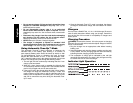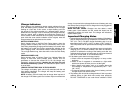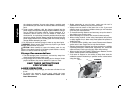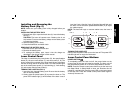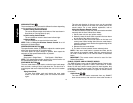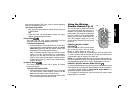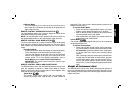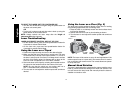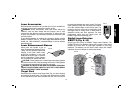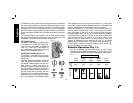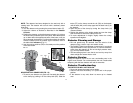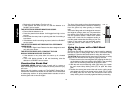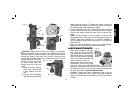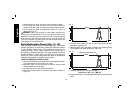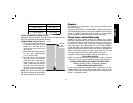
English
14
TO RESET THE LASER UNIT FOR CONTINUED USE
• Turn the unit off and back on again using the power button on
the laser unit control panel.
OR
• Put the unit in sleep mode and then wake it back up using the
power button on the remote control.
NOTE: Always recheck the laser setup after the Height of
Instrument Alert has triggered.
Laser Troubleshooting
LASER AND REMOTE CONTROL ARE OUT OF SYNC
• On the remote control, press and hold speed/rotation button for
4 seconds to activate Public Mode.
• On the laser unit, press and hold speed/rotation button for
4 seconds to activate Public Mode.
Using the Laser on a Tripod
1. Position the tripod securely and set it to the desired height.
2. Make sure that the top of the tripod is roughly level. The laser
will self-level only if the top of the tripod is within ± 5˚ of level. If
the laser is set up too far out of level, it will beep when it reaches
the limit of its leveling range. No damage will be done to the
laser, but it will not operate in an “out of level” condition.
3. Secure the laser to the tripod by screwing the threaded knob on
the tripod into the female thread on the bottom of the laser.
NOTE: Be sure that the tripod you are working with has a
5/8"–11 threaded screw to ensure secure mounting.
4. Turn the laser on and adjust the rotation speed and controls as
desired.
Using the Laser on a Floor (Fig. 5)
The laser level can be positioned directly on the floor for leveling
and plumbing applications such as framing walls.
1. Place the laser on a relatively smooth and level surface where
it will not be disturbed.
2. Position the laser for a level or plumb setting as shown.
3. Turn the laser on and adjust the rotation speed and controls as
desired.
LEVEL
MODE
PLUMB
MODE
FIG. 5
NOTE: The laser will be easier to set up for wall applications if the
rotation speed is set to 0 rpms and if the remote control is used to
line up the laser with control marks. The remote allows one person
to set up the laser.
Manual Head Rotation
The laser is designed with a protective alloy cage around the rotary
head to prevent accidental damage from work site activities. You
can still access the rotary head and manually direct the beam to
establish or transfer a mark.



